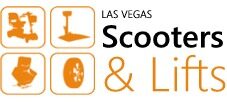Though it seems like good and cheapish option for transporting your mobility device there are few things you need to consider.

Hitch mounted carriers you can find all over the internet ranging from the low hundreds all the way up into the low thousands depending on the manufacture, features and the build construction of the carrier. Most carriers are made from either aluminum or full steel construction depending on where you buy your carrier from.
• Some of the carriers are heavy (steel) and will need to be assembled.
• You will need to buy other items to secure the device to the carrier.
• Make sure the height of the vehicle is not to high or to low.
• Carriers and lifts will interfere with reversing sensors and back-up cameras.
Is it to heavy for my Vehicle?
Most hitch mounted carries require a 2″ Class III (3) receiver on the vehicle and must be rated to be able to carry the scooter or power chair including the carrier itself (tongue weight capacity). This rating can be found in the vehicles owners manual under towing trailer. If you vehicle has the statement “do not tow with this vehicle” is a good indication that no trailer hitch should be attached o the vehicle for towing. Smaller vehicles, sedans and some crossovers are usually not rated for towing without extensive modifications to the vehicles suspension, frame, cooling system and other components. Adding addition weight on to a vehicle that is not rated for towing will damage the vehicle and also invalidate any manufactures warranty.
What Other Things do I Need to Consider
Hitch mounted carriers are all manual operation when it comes to loading you device and also folding up the carrier when not being used (if applicable). The heavy construction of the steel style carriers makes it pretty difficult to fold up and operate if lifting is something you have trouble doing.
Some vehicles trailer hitch receivers can be quite high from the ground so some single ramp or short carriers can make the carrier to high and steep to load your device on to the carrier.
Make sure to measure, and your device weight (with batteries) to make sure your carrier has enough weight capacity to accommodate the size and weight of your device.
What else will I need to Purchase?
Most of these carries accommodate for ratchet strap attachments points to secure you device to the carrier. If your carrier doesn’t come with any sacrament straps you may have to purchase these extra.
If you have to leave your device for any reason on the carrier unattended some kind of lock (bicycle) would be advisable to secure your device to the carrier. Also remove anything that can be easily take from your mobility device like battery pack, seat, basket and keys.
Most carriers are attached to your vehicle’s receiver hitch via a locking pin (not supplied) and can be very loose so an aftermarket hitch securement bracket may be needed to stop any side to side and up and down excessive moment.
